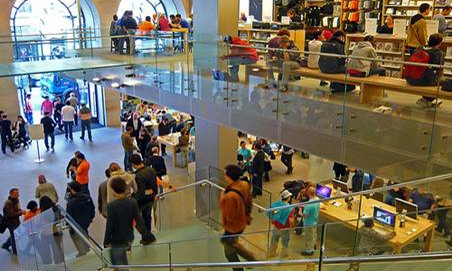REXPIRE: RFID Experience and Privacy in the Retail Environment. Indications for In-Store Consumer Research

As technologies such as Radio Frequency Identification (RFID), smart cards, mobile computing and GPS tracking, are increasingly pervasive new issues for social sciences have emerged (see Batty and Longley 2003; Batty et al. 2003; 2004). Since the diffusion of the Internet, privacy has been recognised as an emerging important societal issue (the first Silicon Valley 'Computer Freedom and Privacy Conference' was held in 1991). Privacy and security concerns leaded to a common distinction between an on-line risky environment and a safer off-line "brick and mortar" environment. Today, ubiquitous communication is restructuring such a clear distinction between a virtual and a non virtual reality. Both opportunities and risks of on-line communication potentially extend to off-line interactions and contexts (Bose et al. 2009; Thiesse, 2007).
Issues of trust, risk perception and privacy that appeared to be specific problems of on-line communication are now increasingly associated to the physical environment. How these issues affect people behaviour and what is the consequent relation between the physical and the virtual environments are emerging research themes.
A main target for many innovations based on mobile and RFID technologies (Batty et al. 2003; 2004) is the retail environment. Behaviour can be monitored, data can be gathered, services and advertising can be delivered to consumers during their shopping activities upon request, according to their location and as a consequence of certain behaviours such as products observation and choice (Batty et al. 2003; 2004; Kowatsch and Maass, 2010; Heijden, 2005; Westerman et al. 2007). However, despite the variety of their potential applications, barriers to mass adoption as well as many questions on their implications on people behaviours and perceptions still remain to be addressed.
With this research I attempt to extend the existent literature by means of an interdisciplinary approach, merging social-psychology research with computer technologies developments in the built environment. More specifically, first I will explore the social-psychological dimensions of privacy concerns toward RFID-enabled services and, then, I will attempt to clarify whether and how these technologies have an impact on the consumers’ experience of the in-store environment.
- People
Nadia Olivero
- Outputs
This is a new project that has only just started and outputs reflect those in our other projects specifically COSMIC and GENeSIS:
- Batty, M. (2010) Visualising Space-Time Dynamics in Scaling Systems, Complexity, 16, 2, 51-63.
- Wilson, A. G. (2010) A general Richardson-Lotka- Volterra-reaction diffusion model, CASA Working Paper 159
- Impact
The academic objectives which include the impacts of this programme are as follows
- To explain flow patterns of trade, migration, security (including terrorism, crime and military disputes) and development aid with respect to rapid and unexpected change which we will articulate using conventional theory associated with catastrophe, bifurcation and related methods of nonlinear analysis.
- To demonstrate that patterns of global change can only be explained when the systems above are linked together, thus developing the idea that rapid and unexpected changes at the global level can only be explained in terms of coupling systems together.
- To illustrate how different modelling styles from the quantitative to the qualitative can be integrated both in individual systems as well as between systems.
- To extend such analysis to consider multi-scale, multi-temporal dynamics associated with different characterisations of trade, migration, security and development aid at the regional, country and city scales and over very different time horizons.
- To develop databases for each of these individual global systems and to calibrate and validate appropriate models of the functioning of such systems before integrating these various data in the quest to explain how coupling these systems provides deeper explanations of global dynamics.
The methodological objectives of this programme are as follows.
- To develop a new mathematics for coupled global dynamics, building on three accepted approaches: spatial interaction models embedded in nonlinear logistic frameworks, reaction-diffusion models which link location and flow, and network models that enable diffusion.
- To link spatial interaction to morphogenesis in the trade and migration systems linking Boltzmann-Lotka-Volterra to Turing models in the style associated with Krugman and Venables, to develop reaction-diffusion models to explain changing patterns of terrorism and military disputes, and to develop network models in which such diffusion is captured as epidemic processes, applied to patterns of crime.
- To extend these models to deal with the emergence of new events or categories, such as countries and cities building on Cederman-Axelrod styles of model, enabling the unexpected dynamics of the global system to be appropriately represented.
- To develop new approaches to calibrating, validating and disseminating such models through visual environments that depend on Web 2.0 technologies.
 Close
Close

